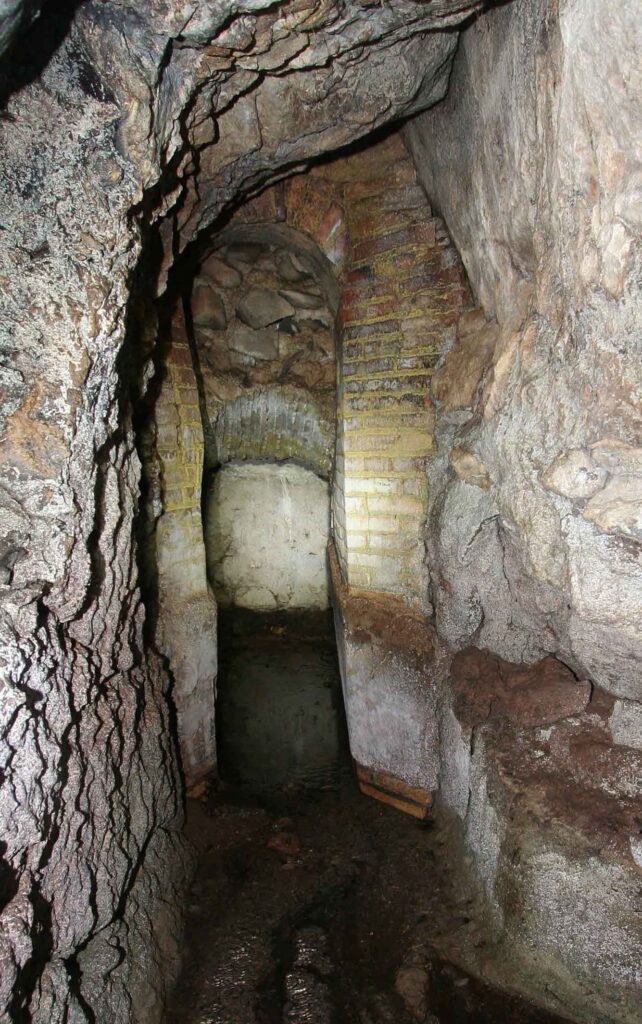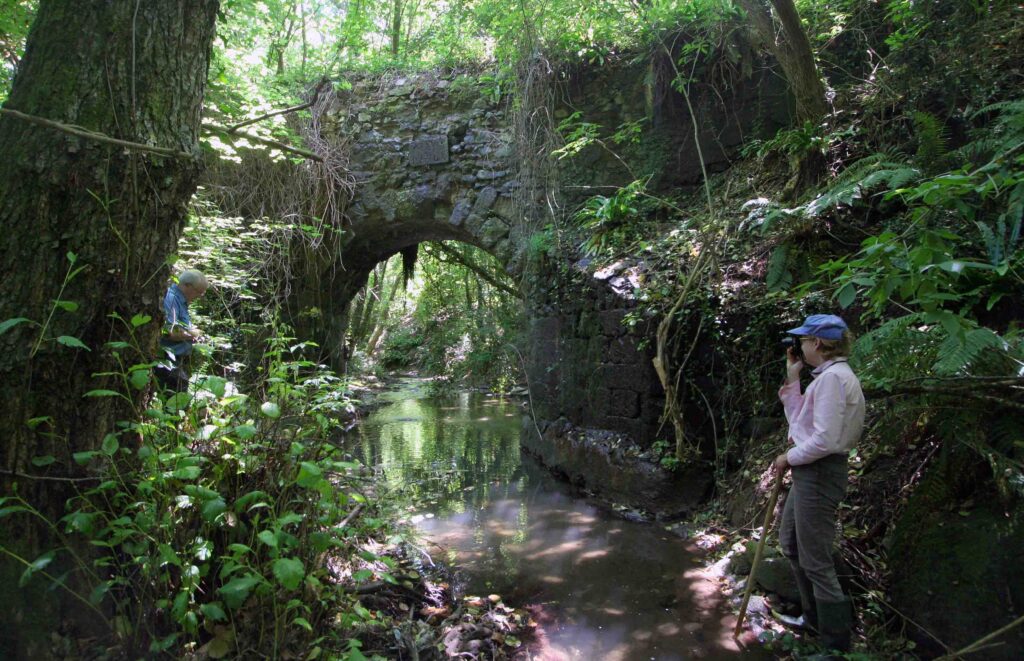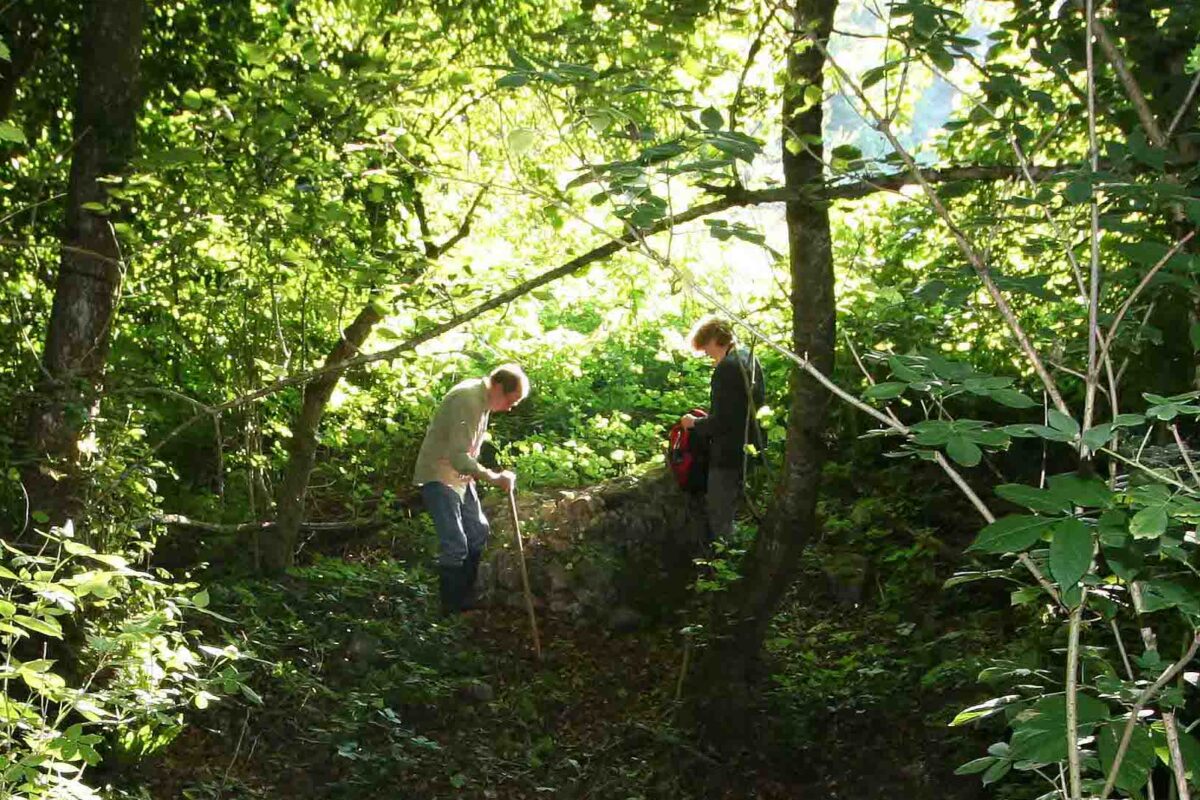Aqueducts: You’ve seen them on TV and in movies, in History Channel specials and textbooks on antiquity, maybe even on a tour of the Italian countryside. Towering structures of stone and Roman concrete, aqueducts supplied ancient cities with running water by channeling that water downhill from its sources — that’s the basic idea, anyway. But while most of us recognize the name and the concept, aqueducts don’t tend to keep our focus. We concentrate instead, when we think of the Romans at all, on emperors, gladiators, or the Colosseum.
But to Rabun Taylor, a professor in UT Austin’s Department of Classics and a working archaeologist, to overlook the aqueducts is to miss one of the most interesting stories the ancient world has to tell us — one full of engineering marvels, cultural transfer, even climate change. And for the last 15 years, he’s been working to tell that story through one aqueduct in particular: the Aqua Traiana.
He’s been working, in particular, to solve a mystery. First built in the early first century AD to supply Rome with water from near Lake Bracciano, the Aqua Traiana outlived the Roman Empire and continued to flow for almost 800 years. But for all its importance and longevity, modern archaeologists couldn’t answer a key question: Where did its water come from?

“There is not nearly as much evidence as you might think for the sources of ancient Roman aqueducts,” Taylor explains. “The water sources for the Aqua Traiana, for example, were not known to archaeology until 2009.” That’s when a team of archaeologists — including Taylor — first identified a springhouse, a structure built around a spring to collect water, that had once fed into the aqueduct.
Since that finding, there’s been a flood of interest that has yielded more and more Aqua Traiana-related discoveries, including more springs and springhouses. These are remarkably well-preserved, Taylor says, and each is unique. “Every springhouse looks different because it’s configured according to the shape of the spring and the way it emerges from the ground,” he says.
The springhouse at the aqueduct’s primary source, for example, “is almost like a bay inside of an amphitheater,” Taylor says. “It’s got a concrete cross-vault and brick walls down either side that originally were brick arches. It looks very Roman, as you would expect it to.” Another source is a long narrow gallery with an arcade down one side made of a series of arches. Those arches are built right up against a cliff face, from which water pours through cracks in the rock. “The arches were designed in such a way that they accommodate those fissures,” Taylor says, “and then the floor of the gallery is the collecting pool for the water. The whole thing is perched on a shelf above a valley, and the water flows downhill and then across a bridge to a conduit on the other side of the valley that carries it to the aqueduct.”
The engineering required to build the Aqua Traiana and structures like it, not to mention the financing and politicking, is part of what keeps Taylor intrigued. “It’s hard enough to design an aqueduct today using modern computers and surveying tools,” he says. “In antiquity it was that much harder, and yet Romans were able to do it, in some cases to an almost incredible degree of precision. And the question of how they did that is still very much open today.”
Part of that “how” was through the extensive labor of the aquarii, a team of enslaved “water workers” hundreds strong who plastered aqueduct channels, opened and closed water valves, and generally kept Rome’s complicated water system flowing. We know a lot about the aquarii and the structure of water system thanks to ancient sources, Taylor says, but their presence sparks still more questions. How did they learn to do this work, and how did they pass that knowledge down through the centuries? How much did they know, exactly?
“There must have been some theory, particularly in regard to understanding how forces worked in large buildings or how water functions,” Taylor says. “And we see that occasionally kind of trickling out into Latin texts, but for the most part it’s lost to us.”

Scholars’ best guesses, says Taylor, come from studying the aqueducts themselves. By looking at siphons built to transport water across deep valleys, for example, archaeologists can recreate what the Romans must have known about fluid dynamics and pressure.
And there may be still more the Aqua Traiana can share. By looking at limescale buildup in the aqueduct’s water channel and sediment cores from a nearby lake, Taylor’s currently exploring whether it’s possible to map the Aqua Traiana and other aqueducts onto climate change in the Roman period and beyond. In this way, and many others, these towering testaments to ancient planning and engineering still have a lot to teach us about both the ancient world and our own.

